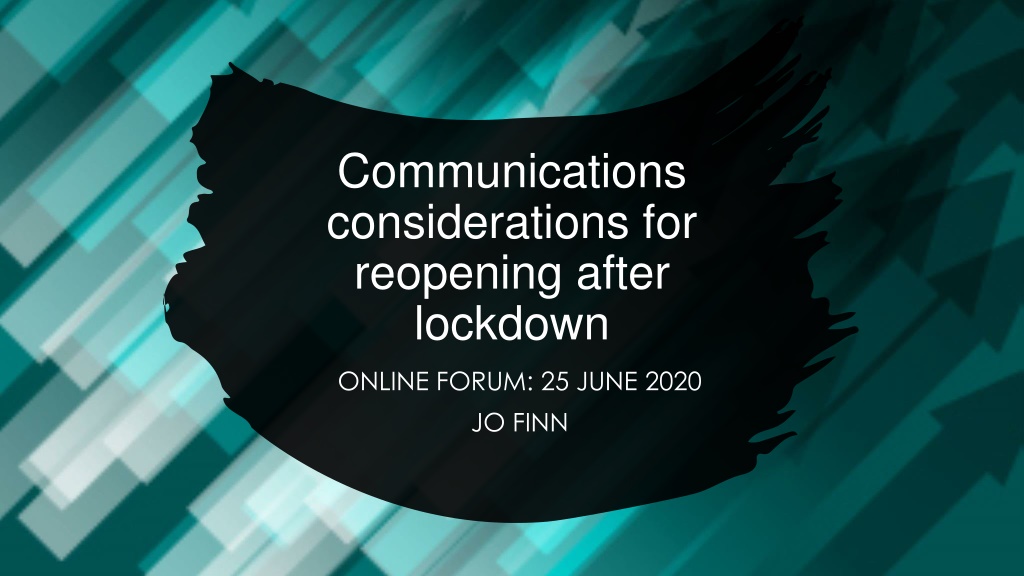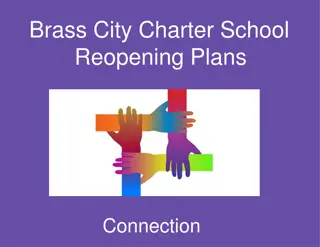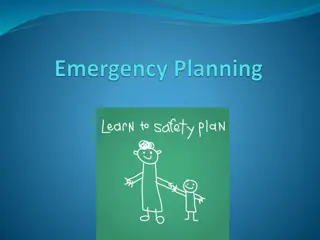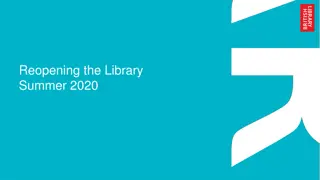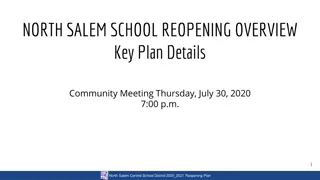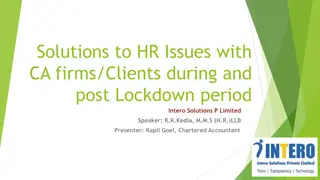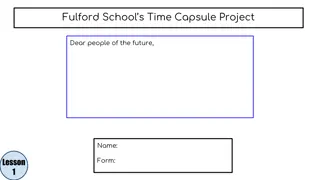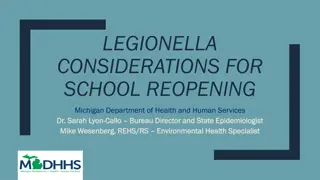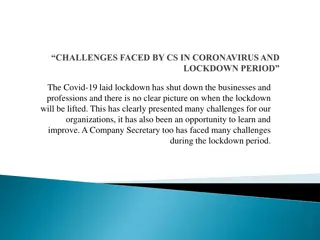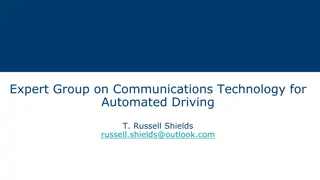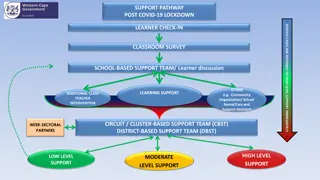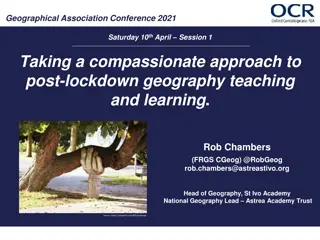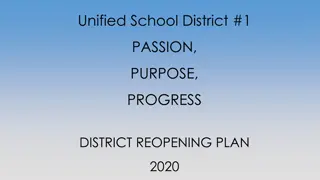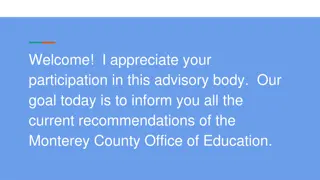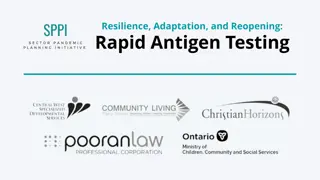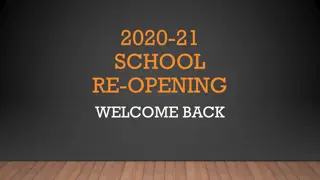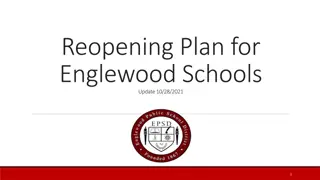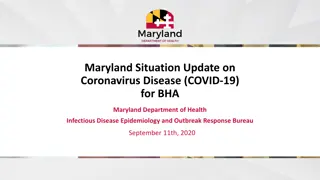Effective Communications Considerations for Reopening Post-Lockdown
Explore key strategies for reopening post-lockdown, including internal communications, audience segmentation, remote working tips, messaging balance, and avoiding over-sanitization. Learn how to maintain brand values, address visitor concerns, and engage furloughed staff effectively. Find ways to balance reassurance, warmth, income generation, and visitor expectations in your marketing messages.
Download Presentation

Please find below an Image/Link to download the presentation.
The content on the website is provided AS IS for your information and personal use only. It may not be sold, licensed, or shared on other websites without obtaining consent from the author. Download presentation by click this link. If you encounter any issues during the download, it is possible that the publisher has removed the file from their server.
E N D
Presentation Transcript
Communications considerations for reopening after lockdown ONLINE FORUM: 25 JUNE 2020 JO FINN
Reopening after lockdown: communications considerations Internal comms Balanced messaging Retaining your brand values and tone of voice Addressing visitor questions and concerns Auditing your comms channels Segmenting your audience: who is likely to return? Lead generation opportunities Back to basics marketing
Remote working and communicating with furloughed staff Remote working poses some challenges but most organisations have embraced Zoom/Skype/Teams as a means to hold meetings and share screens to review documents together. Google docs/sheets are also excellent tools for collaborative remote working. Use tools such as Slack to avoid email fatigue. Regular updates from the leadership team (email, webinar, Zoom meetings) and staff surveys e.g. about returning to work are recommended as a means to gauge feelings and listen to/address staff concerns. Communicating with furloughed staff is more challenging as there are legal restrictions on contact about anything work-related. WhatsApp groups, virtual socials and bulletins for furloughed staff are effective for keeping in touch. Can you offer furloughed staff training opportunities?
Messaging balancing act Marketing messages are likely to be a balancing act between: Reassurance that your museum is safe to visit. NB Visit England s self-assessment We re good to go kite mark launched today. Extending a heartfelt and warm welcome back. Being sensitive towards people s personal experiences of Covid-19. Addressing your commercial drivers for income generation. Managing expectations of the limited visitor experience due to social distancing and reduced facilities. Know before you go . Some venues are producing video walk-throughs. Demonstrating the role of your museum in providing cultural nourishment , entertainment and escapism.
Dont over-sanitise your comms You have a responsibility to ensure that what you are communicating follows current government guidelines but don t lose sight of your brand values and tone of voice. Light- hearted but not jokes. There s a risk of over-sanitising the visitor experience with long lists of dos and don ts. How can you make signage yours ? We re all familiar with physical/social distancing and won t need to be constantly reminded. Visitors will be looking forward to some escapism from Covid-19. No need to apologise. Induct FOH staff and volunteers in the new health and safety protocols so they can talk to visitors about the new visitor experience rather than relying on signage overload. Test your messaging with your various audience groups before going live to check that it resonates with an appropriate tone. Similarly you could hold a trial run before opening with friends to test signage, systems and FOH responses to queries etc.
Prepare an FAQ Address common Covid-19 related queries with an FAQ on your website. This can be referred to when you respond to social media posts and press enquiries. It will also be a useful resource for FOH staff when visitors begin to return. Questions could include: When are you reopening? What measures are in place to keep visitors safe? Do I have to wear a mask? What will I be able to see? Will the toilets/caf /shop be open?
Audit your comms channels Carry out an audit of your messaging across all channels (online, in- venue, on TripAdvisor etc) to identify what needs updating e.g. group visits, booking process, opening hours, facilities. You may wish to avoid using images of the venue looking busy when you reopen, being mindful of people s nervousness and showing that social distancing is possible. Do you need new photography showing the revised visitor experience?
What will your visitor profile look like when you reopen? Your new visitor demographic may be limited to local individuals, couples and families in the first instance. It may be some time before you welcome back schools, groups and overseas audiences. Identify the low-hanging fruit. Consider your local community s nervousness about attracting visitors to the area and increasing the risk of Covid-19 spread. How can you engage locally? Talk to your audiences (including staff and volunteers). Find out what they have they missed and gauge their appetite for returning. You can address the concerns of your various audience groups with clear, nuanced and considered messaging. But don t neglect harder to reach audiences. Will new forms of outreach be needed in the absence of a schools programme?
Lead generation opportunities Are you ticketing entry in order to manage capacity with timed slots? In the new government guidance, they expect museums to support the NHS s Track and Trace initiative. This means museums will have to collect visitor contact details and store them for 21 days. There are lots of ticketing systems out there including some free ones (Art Tickets and Ticket Source). The Audience Agency have info on their website. Online ticketing will provide you with opportunities for data capture and lead generation. Think through marketing permissions and GDPR to future-proof any new lists. Encourage people to sign up to your newsletter via your social media channels and vice versa. Collaborate with other venues locally and across the region to cross-promote your offer.
Back to basics and agile marketing With budget cuts inevitable, focus on owned channels (your website, email marketing and social media) and earned channels (e.g. press and third party advocacy). Your usual channels might not work in the short-term. Embrace this opportunity to rethink your marketing approach! Any paid activity is likely to be digital first (which is more agile than print and offers more flexibility to ramp up and down as required). Make use of your analytics to evaluate what digital activity is driving conversions (e.g. to book tickets) and engagement. Adapt your digital approach accordingly. Print advertising is a risky commitment in the short-term with the possibility of a second lockdown and changes to travelling patterns. Concerns around infection risks related to flyers. Be mindful that there may be a glut of marketing activity as venues start to re-open. How will you have cut-through? Reflect on your vision, revisit your brand values, segment your audiences and adapt your marketing approach to attract the visitors who are most likely to come back.
Book a 1-2-1 marketing surgery and download the reopening toolkit SOUTHEASTMUSEUMS.ORG
